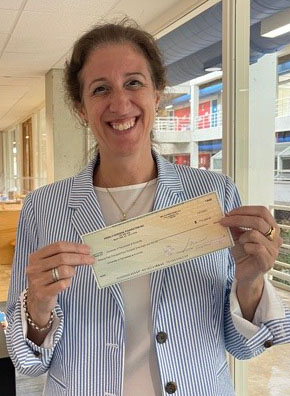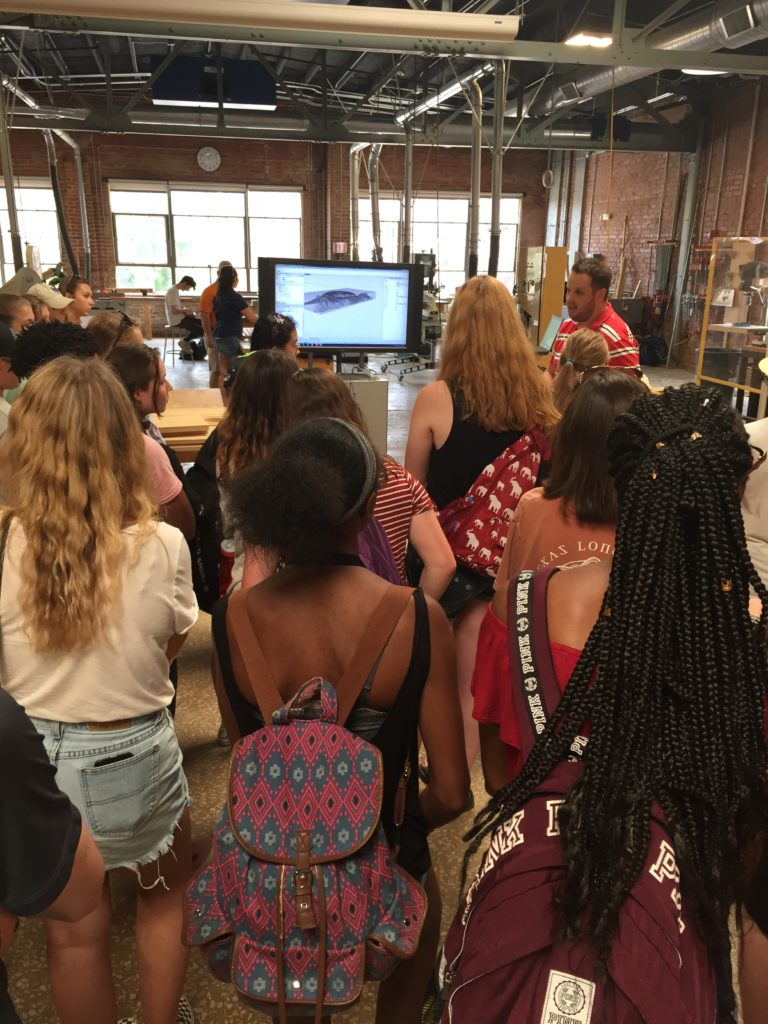August 5, 2021 $72,000 Grant Connects UT Interior Architecture Students with Local STEM School to Share Design, Increase Diversity in the Profession

A $72,000 grant from the Angelo Donghia Foundation is making possible the work of students in the School of Interior Architecture as they engage with a local middle school and address diversity in the profession. The grant will fund the creation of the EYMIE (Engaging Youth to Make Interactive Experience) Lab, a mobile lab and library equipped with tools and technology for design and making, as well as design/build installations that benefit local communities.
Beginning in fall 2021, Interior Architecture students will partner with fifth- and sixth-grade students at Lenoir City Intermediate/Middle School, a Title I STEM (science, technology, engineering, mathematics)-designated school in Lenoir City, Tenn. Throughout the semester, the UT students will design the mobile design lab in collaboration with the young students to introduce them to design and participate together in design/build projects.
For more than 20 years, the Angelo Donghia Foundation has supported students’ learning experiences in interior architecture. The three-year grant was awarded in July 2021 and will enable the School of Interior Architecture to partner with various community schools through 2024.
“Using the EYMIE Lab, our students will serve not only their own quest to become inclusive and highly competent designers, but they also will introduce underserved youth in our region to the power of design to address human need,” said Milagros Zingoni Phielipp, director of the School of Interior Architecture. “Professor David Matthews will lead the first semester, and throughout fall, our students will be exposed to the first design/build studio in the School of Interior Architecture. We’ll gain global competency, expose students to fabrication and explore the expanded field of interior architecture, with a long-term goal of increasing diversity in the profession.”
As stated in the grant proposal, “Central to the School of Interior Architecture’s educational philosophy is the fundamental principle that faculty and students must teach, learn and experiment to identify the limitations of the discipline while positively impacting the community around them. Students and faculty continue to learn more about the connection of interior spaces and wellbeing, and in response, they will amplify the voices of those unheard in the design process. Increasing diversity and developing empathic responses are at the forefront of the school and profession’s initiatives.”
Through this collaborative program, youth become exposed to the power of design to change the world, and their creative energy is sparked as they begin to consider an education and career in design. Research indicates that many youth self-select out of design disciplines before they enter high school, so exposing them at an early age can begin to reverse that trend and ultimately address diversity in higher education and the design professions.
“The challenge ahead of us is to shape well-rounded designers who are empathetic, inclusive and collaborative risk takers while they master the technology-related skills the profession requires,” said Zingoni. “Through this funded project and our curriculum, we expose students to the philosophy of ‘learning by making’ through the complete design process as they gain cultural competency by engaging in the world around them.”

Taking advantage of the strong correlation between learning and making, UT students and faculty will lead the middle-school students to use tools and technology in the mobile lab to design and fabricate for public exhibition. Large-scale fabrication aspects of the project will be completed in the college’s Fab Lab, a 20,000-square-foot maker space equipped with state-of-the-art digital fabrication equipment.
This unique effort will expand the College of Architecture and Design’s design/build program to include emerging technologies that promote discovery and interaction through sensors and electronics platforms. This technology, which includes motion sensors, pressure sensors, motion trackers and more, will be used to design and build interactive experiences.
The Angelo Donghia Foundation was founded in 2001 to honor Angelo Donghia (1935-1985), an award-winning and successful American interior designer. The foundation gives grants and scholarships to support education in interior design and interior architecture.



